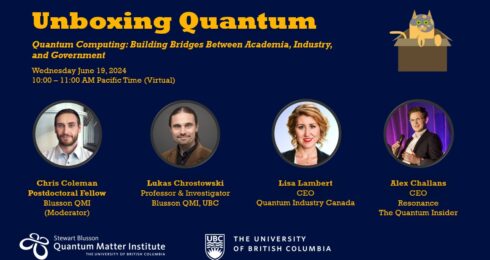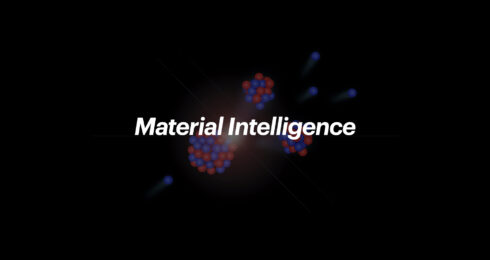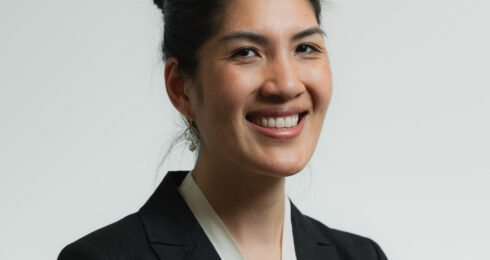Pictured: Jingda Wu, a self-portrait.
Jingda Wu feels most at home beside the ocean, where the air along the coast seems fresher, and this feeling of being home enables him to do his best work. Wu, a postdoctoral fellow in Ziliang Ye’s lab, came to UBC from the University of Washington in 2017. He spent his first three years at the Stewart Blusson Quantum Matter Institute (Blusson QMI) working with Jeff Young and Lukas Chrostowski, where he put his background in photonics to work with a goal of developing qubits on a silicon photonic platform; in 2020 he joined Ye’s team, venturing off in a different yet familiar direction. While he continues to complete projects started in Young’s lab, he is now mainly working on projects in 2D Van der Waals materials.
“My favourite part of what I do is designing experiments to study properties of materials and devices; I like always learning something new,” said Wu. While Wu studied both physics and engineering, he is most interested in novel physics. “There are just so many interesting phenomena, so many new little things.”
Among Wu’s current projects is an effort to measure superconducting phase transition in layered cuprates with optical spectroscopy, work he is doing in collaboration with Yunhuan Xiao, a graduate student in Ye’s lab.
“Using electrodes to measure superconductivity is not ideal in certain cases; the sample fabrication can be very challenging, especially for air-sensitive materials like BSCCO (bismuth strontium calcium copper oxide), and you are measuring an overall behavior of the material,” explained Wu. “Using pump probe spectroscopy, we are able to more effectively probe the local properties of material and monitor phase changes without the limit in sample fabrication.”
“With 2D materials, there are so many different areas and physics you can study, a lot of interesting directions,” said Wu.
There are some Van der Waals materials that, when stacked at certain angles, are amenable to engineering of the phase of the materials, altering the properties of the material. With materials like these, researchers like Wu are able to take advantage of the properties of Van der Waals semiconductors, transforming the material into a photovoltaic photodetector.
“Normally, you would need a junction to help generate an electrical field in the device in order to convert light to electricity, such as in a commercial silicon solar cell,” said Wu. “In the material we are studying, the electron hole pairs are naturally separated and generate electrical current when being illuminated with light, even without an external bias field. This means we are able to convert light to electricity without further engineering the material, and it’s a new form of the so-called bulk photovoltaic effect.”
Wu is collaborating with Dongyang Yang, a graduate student who’s leading the project, and Teri Siu, a talented undergraduate co-op student in Ye’s lab for this project. The materials come from a collaboration with Yoshihiro Iwasa from the University of Tokyo, a partnership that emerged with Ziliang Ye and that is connected with the UBC-Max Planck-UTokyo Centre for Quantum Materials.
Wu’s approach to science—curiosity-driven, social in nature—has enabled him to build a network of collaborative colleagues at SBQMI, linking several labs and embodying the mission and vision of his home institute. In addition to his partnerships connected with Yang and colleagues, Wu also works with Hao Chu, Giang Nguyen and Jiabin Yu, postdoctoral fellows and a student in Andrea Damascelli’s and Sarah Burke’s groups, characterizing nonlinear optical properties in interesting materials. His personal interests mirror his scientific interests: he had been enjoying landscape photography, and has moved more into portraits and street photography; it’s a creative way to transform light, but it also opens a window for Wu into other people’s lives.
“The work that I do—studying light-matter interactions in novel materials—it is an area with a lot of opportunity and a really big community, so I really enjoy being so connected to other researchers,” said Wu. “There is always more to learn, and so many interesting problems to look into.”


